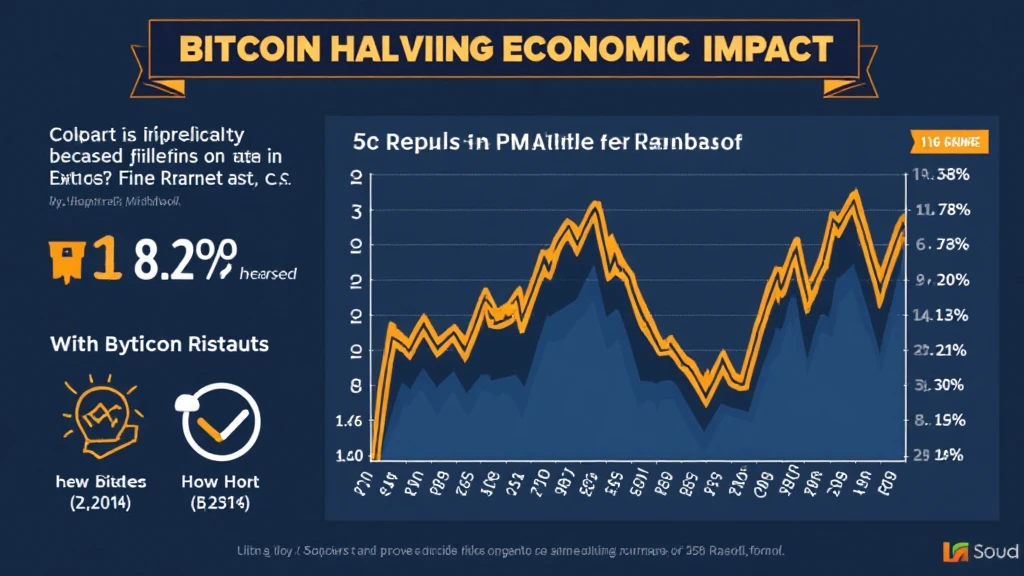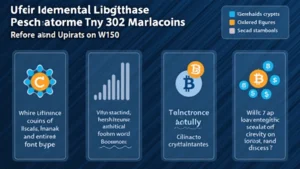The Economic Impact of Bitcoin Halving: An Overview
In the cryptocurrency world, Bitcoin halving is a pivotal event that occurs approximately every four years, playing a crucial role in determining both the supply and demand dynamics of Bitcoin. As of May 2024, the next halving event is poised to significantly shape the market landscape. This article will delve into the specifics of Bitcoin halving, its economic impact, historical data, and its implications for investors and the broader market.
Understanding Bitcoin Halving
Bitcoin halving refers to the process by which the reward for mining new blocks is cut in half. This systematic reduction in Bitcoin issuance is built into the cryptocurrency’s protocol, ensuring a controlled supply growth, which in part aims to combat inflation. For instance, the current reward for miners is 6.25 Bitcoins; post-halving, it will drop to 3.125 Bitcoins. Such mechanisms are essential for maintaining the asset’s scarcity, similar to how precious metals like gold are mined.
Current Market Context
As of late 2023, Bitcoin has experienced significant fluctuations, primarily driven by macroeconomic factors, regulatory scrutiny, and technological developments. With Vietnam experiencing a notable increase in cryptocurrency adoption—over 41% of Vietnamese users surveyed reported holding cryptocurrency—Bitcoin halving events gain even more importance as potential price catalysts, not just globally but in emerging markets like Vietnam.

Historical Trends: Previous Halvings
To comprehend the economic impact of Bitcoin halving, it’s vital to analyze the historical precedents set by previous events. The last two halving events in 2016 and 2020 produced remarkable market behavior:
- 2012 Halving: The first ever halving led to an increase in Bitcoin’s price from approximately $12 to over $1,200 within a year.
- 2016 Halving: Bitcoin’s price soared from around $450 to nearly $20,000 by the end of 2017, showcasing a dramatic rally fueled by increased market demand.
- 2020 Halving: Following this event, Bitcoin’s price escalated from about $8,500 to an all-time high of over $64,000 in April 2021, marking the most substantial growth trajectory.
An Economic Perspective of Halvings
From an economic standpoint, Bitcoin halving significantly influences market supply and investor behavior. Here’s the catch: as the supply of new Bitcoins diminishes, if demand remains constant or increases, the price typically rises based on basic supply and demand principles.
Market Demand and Scarcity
The perceived scarcity due to halving can enhance demand among both retail and institutional investors. As observed in previous cycles, the anticipation of future supply constraints often spurs buying behavior, driving prices higher leading up to, and following, the halving event.
Investor Psychology and Speculation
The hype surrounding Bitcoin halving events often leads to speculative trading, where traders position themselves ahead of expected price movements. Behavioral economics suggests that as more media coverage and retail interest builds, investors are often more inclined to invest, thus contributing to volatility. This cycle of speculation can amplify the price movements leading into and following the event.
Global Interest and Vietnam’s Position
In recent years, Vietnam has emerged as a significant player in the cryptocurrency markets. With a 41% increase in cryptocurrency ownership in the country, the impact of Bitcoin’s halving extends beyond local interest to regional investment trends.
As the Vietnamese market continues to expand, understanding Bitcoin halving’s economic implications becomes essential for local investors aiming to optimize their returns.
Investment Strategy Post-Halving
Investors should consider strategies such as:
- Long-term holding strategies based on historical price trends.
- Diversifying portfolios with altcoins, especially the 2025年最具潜力的山寨币, as they often flourish post-Bitcoin halving.
- Engaging with wealth management services that focus on crypto-assets to navigate the volatility.
Regulatory Environment and Compliance
As countries like Vietnam develop their regulatory frameworks, it is increasingly crucial for investors to remain compliant with local regulations surrounding cryptocurrency. In Vietnam, the government has been considering frameworks that could help stabilize the market while promoting innovation.
Risks Involving Regulatory Changes
Changes in regulations can impact market prices and investor sentiment significantly:
- The introduction of strict regulatory measures can dampen market enthusiasm, leading to decline in prices.
- Conversely, positive developments, like legal recognition of cryptocurrencies, can bolster investor confidence and market growth.
Conclusion: Navigating the Post-Halving Landscape
In conclusion, the economic impact of Bitcoin halving is a multifaceted topic that encompasses supply dynamics, market psychology, and local regulatory frameworks. As we prepare for the impending halving in 2024, it is crucial for both seasoned and new investors to approach the market with informed strategies. Preparing for potential volatility while capitalizing on historical trends can lead to favorable outcomes in the world of cryptocurrency.
Understanding the implications of Bitcoin halving will provide a roadmap for navigating the turbulent crypto waters ahead. Remember the significance of being strategically positioned, especially in a rapidly developing market like Vietnam. As the crypto landscape evolves, market players need to stay informed and adaptable. The future of Bitcoin and its economic implications remain to be seen; however, one thing is clear—halving events significantly shape the trajectory of Bitcoin.
For further insights on cryptocurrency strategies and regulations, visit hibt.com.
By adopting strategic measures and understanding Bitcoin halving’s economic implications, investors can better position themselves for success in the cryptocurrency space.
Author: Dr. Emily Nguyen, a recognized expert in blockchain technology and cryptocurrency economics, has published over 15 papers on the subject and has led high-profile cryptocurrency audits.











